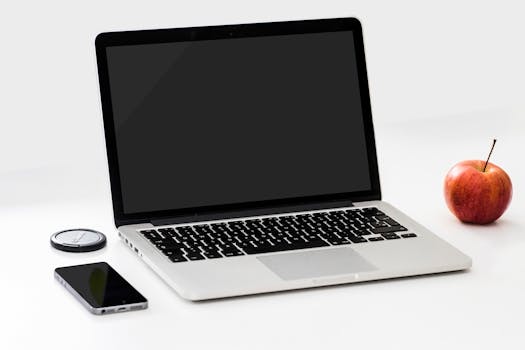
Is your Windows 10 PC running slow? Clearing the cache can often resolve performance issues, free up valuable disk space, and improve overall system responsiveness. This guide provides a comprehensive walkthrough on how to clear various types of cache in Windows 10, step-by-step.
Clear Windows 10 Cache: Boost Speed & Free Space
Is your Windows 10 PC running slow? Clearing the cache can often resolve performance issues, free up valuable disk space, and improve overall system responsiveness. This guide provides a comprehensive walkthrough on how to clear various types of cache in Windows 10, step-by-step.
Why Clear Your Windows 10 Cache?
Before diving into the how-to, let's understand why clearing the cache is beneficial. The cache is a temporary storage location for files that your computer uses frequently. This allows for faster access to these files, improving performance. However, over time, the cache can become bloated, corrupted, or simply outdated, leading to:
- Slow performance: An overloaded cache can slow down your system.
- Disk space issues: Temporary files can take up significant disk space.
- Application errors: Corrupted cache files can cause applications to malfunction.
- Privacy concerns: The cache can contain sensitive information about your browsing history.
Types of Cache You Can Clear in Windows 10
Windows 10 has several types of cache. Here's a rundown of the most common ones and how to clear them:
1. Temporary Files
Temporary files are created by Windows and applications for various purposes. These files are often left behind after the program is closed, accumulating over time. Clearing these files can free up a significant amount of disk space.
How to Clear Temporary Files:
1. Open the Settings app (Windows key + I).
2. Click on System.
3. Select Storage.
4. Under "Local Disk (C:)" or your primary drive, click on Temporary files.
5. Windows will scan for temporary files. Select the types of files you want to remove (e.g., Temporary files, Downloads, Recycle Bin). Be careful not to delete anything you might need.
6. Click on Remove files.
Tip: If you're unsure about deleting files in the Downloads folder, uncheck it.
2. Disk Cleanup
Disk Cleanup is a built-in Windows utility that helps you remove unnecessary files, including temporary files, system cache, and more.
How to Use Disk Cleanup:
1. Type "Disk Cleanup" in the Windows search bar and press Enter.
2. Select the drive you want to clean (usually C:).
3. Disk Cleanup will scan your drive. In the window that appears, check the boxes next to the file types you want to remove (e.g., Temporary Internet Files, Recycle Bin, Thumbnails).
4. Click on Clean up system files to scan for additional files that can be removed, like Windows Update cleanup files.
5. Select the drive again if prompted.
6. Check the boxes for the additional file types and click OK.
7. Click on Delete Files to confirm.
3. Browser Cache
The browser cache stores website data like images, scripts, and HTML files to load pages faster. Clearing the browser cache can resolve issues with website display and improve browser performance. The process varies slightly depending on your browser.
Example: Clearing Chrome Cache:
1. Open Chrome.
2. Click on the three vertical dots in the top-right corner.
3. Go to More tools > Clear browsing data...
4. In the "Time range" dropdown, select "All time".
5. Check the boxes for "Cookies and other site data" and "Cached images and files".
6. Click on Clear data.
Tip: The process is similar for other browsers like Firefox and Edge. Look for options like "Clear browsing data," "Privacy & Security," or "History".
4. DNS Cache
The DNS cache stores the IP addresses of websites you've visited. Clearing the DNS cache can resolve issues with website access and improve internet connectivity.
How to Clear the DNS Cache:
1. Open Command Prompt as an administrator (search for "cmd", right-click, and select "Run as administrator").
2. Type the following command and press Enter:
`ipconfig /flushdns`
3. You should see a message confirming that the DNS Resolver Cache was successfully flushed.
5. Windows Store Cache
The Windows Store cache can sometimes cause issues with app downloads and updates. Clearing this cache can resolve these problems.
How to Clear the Windows Store Cache:
1. Press Windows key + R to open the Run dialog box.
2. Type `wsreset.exe` and press Enter.
3. A blank Command Prompt window will appear for a few seconds, followed by the Windows Store opening. This indicates that the cache has been cleared.
6. Location Cache
Windows 10 stores location data for various apps and services. While clearing it can improve privacy, be aware that some applications may need to re-request location access.
How to Clear Location History:
1. Open the Settings app (Windows key + I).
2. Click on Privacy.
3. Select Location.
4. Under "Location history," click the Clear button.
Important Considerations
- Backups: Before clearing any cache, consider backing up important data. While clearing the cache is generally safe, it's always good to have a backup in case something goes wrong.
- Selective Clearing: You don't always need to clear all types of cache. Focus on the ones that are causing problems or taking up the most space.
- Regular Maintenance: Regularly clearing your cache can help maintain optimal performance and prevent issues from arising in the first place. Schedule a monthly cleanup to keep your system running smoothly.
Conclusion
Clearing the cache in Windows 10 is a simple yet effective way to improve performance, free up disk space, and resolve various system issues. By following the steps outlined in this guide, you can keep your PC running smoothly and efficiently. Remember to choose the appropriate method for each type of cache and to back up your data before making any significant changes. Happy cleaning!
